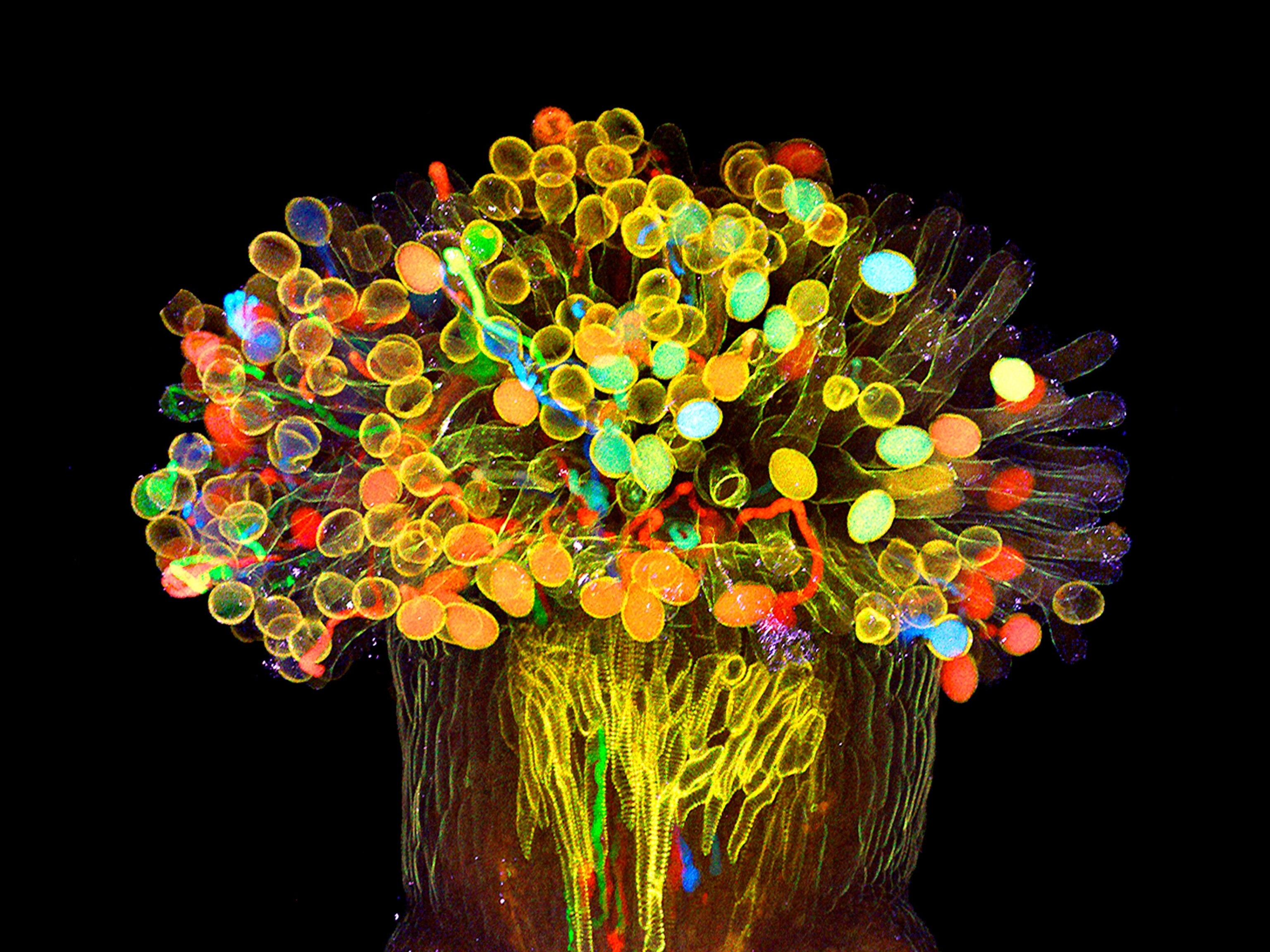
How to Make See-Through Flora—for Science
A chemical that alters chlorophyll makes green plants transparently easy to study.
The inside workings of plants are the unexplored frontier of botany. What happens when a nematode or fungus attacks a crop? How does this stress affect the plant, and how does it physically change the roots, stem, and flowers?
Japanese researchers have devised a way to find out: Make the plant transparent. With a chemical bath, they reduce the plant’s visible chlorophyll, the pigment that makes it green. Days to weeks later the entire plant becomes clear, and scientists can observe its inside tissue at a cellular level.
Death is part of the process. While the plant is still alive, researchers introduce genes for fluorescent proteins, then kill the plant with formaldehyde to freeze the processes the researchers want to study. The method yields information broadly useful in plant research—about reproduction, for instance. Understanding exactly how a plant selects one of the hundreds of grains of pollen that land on a pistil can help breeders propagate better apples or peaches—or any other crop that reproduces by pollination.
So far researchers have tested the transparent effect on rice, tobacco, tomato, cucumber, moss, and other flowering plants. But this sort of botanical x-ray can be applied to anything that sprouts. “Any researcher can use it,” says project lead Daisuke Kurihara, a plant cell biologist at Nagoya University, “and the plant’s interior can be clearly observed and analyzed in detail.”
– With Takao Fujiwara
Related Topics
You May Also Like
Go Further
Animals
- Octopuses have a lot of secrets. Can you guess 8 of them?
- Animals
- Feature
Octopuses have a lot of secrets. Can you guess 8 of them? - This biologist and her rescue dog help protect bears in the AndesThis biologist and her rescue dog help protect bears in the Andes
- An octopus invited this writer into her tank—and her secret worldAn octopus invited this writer into her tank—and her secret world
- Peace-loving bonobos are more aggressive than we thoughtPeace-loving bonobos are more aggressive than we thought
Environment
- Listen to 30 years of climate change transformed into haunting musicListen to 30 years of climate change transformed into haunting music
- This ancient society tried to stop El Niño—with child sacrificeThis ancient society tried to stop El Niño—with child sacrifice
- U.S. plans to clean its drinking water. What does that mean?U.S. plans to clean its drinking water. What does that mean?
- Food systems: supporting the triangle of food security, Video Story
- Paid Content
Food systems: supporting the triangle of food security - Will we ever solve the mystery of the Mima mounds?Will we ever solve the mystery of the Mima mounds?
History & Culture
- Strange clues in a Maya temple reveal a fiery political dramaStrange clues in a Maya temple reveal a fiery political drama
- How technology is revealing secrets in these ancient scrollsHow technology is revealing secrets in these ancient scrolls
- Pilgrimages aren’t just spiritual anymore. They’re a workout.Pilgrimages aren’t just spiritual anymore. They’re a workout.
- This ancient society tried to stop El Niño—with child sacrificeThis ancient society tried to stop El Niño—with child sacrifice
- This ancient cure was just revived in a lab. Does it work?This ancient cure was just revived in a lab. Does it work?
Science
- The unexpected health benefits of Ozempic and MounjaroThe unexpected health benefits of Ozempic and Mounjaro
- Do you have an inner monologue? Here’s what it reveals about you.Do you have an inner monologue? Here’s what it reveals about you.
- Jupiter’s volcanic moon Io has been erupting for billions of yearsJupiter’s volcanic moon Io has been erupting for billions of years
- This 80-foot-long sea monster was the killer whale of its timeThis 80-foot-long sea monster was the killer whale of its time
Travel
- Spend a night at the museum at these 7 spots around the worldSpend a night at the museum at these 7 spots around the world
- How nanobreweries are shaking up Portland's beer sceneHow nanobreweries are shaking up Portland's beer scene
- How to plan an epic summer trip to a national parkHow to plan an epic summer trip to a national park
- This town is the Alps' first European Capital of CultureThis town is the Alps' first European Capital of Culture




